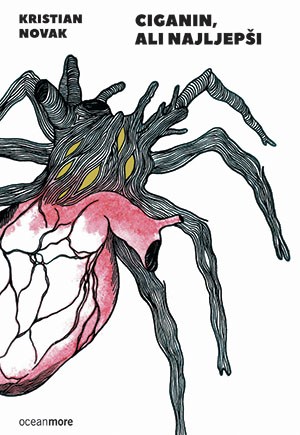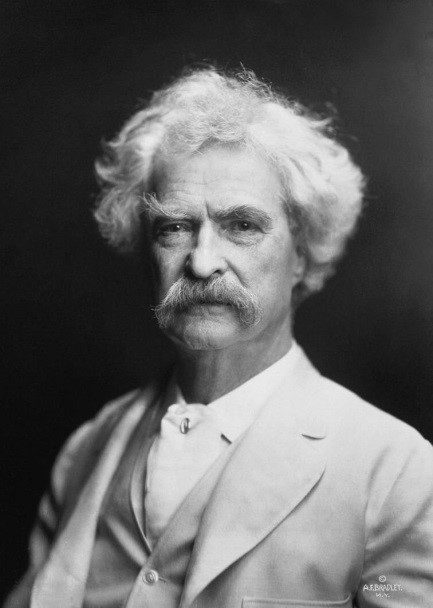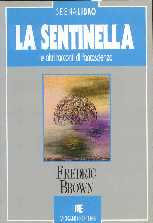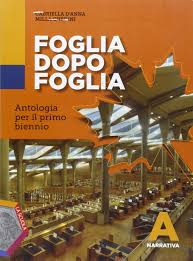
This project promotes open access materials and has been funded with support from the European Commission - Erasmus+ program. These materials reflect the views only of the author, and the Commission cannot be held responsible for any use which may be made of the information contained therein.
[Project Number: 2016-1-HR01-KA201-022159]
![]()
METHODOLOGY
Title of Activity
READING CIRCLES - Kristian Novak: Gypsy, but the most handsome
Description of educational activity
Duration: 60 minutes
Pupils' age: 15-18
Classroom organization: group work (5 x 4 students)
Objective: to improve student's reading literacy and ability to understand the text, the ability to reflect, critical thinking and empathy. It also aims to develop key competencies and transversal skills (critical thinking, taking initiatives, solving problems, participating in collective work ...) that enable students to critically observe and decode cultural, social, political and ideological aspects of language use; cultivating reading culture by creating a readily motivating environment that improves personal reading quality. Enhancement of communication skills, interpretation, analysis and evaluation skills.
Working materials: handouts for reading circles (roleplay reading )
A fragment from the novel "Gypsy, but the most beautiful":
Chapter 4 (4. Tripofobia, fear of holes; 1. S / "The difference between us and white children ... - ... - just a meter to the happiness.")
(4. Tripofobia, fear of holes; 1. S / "The difference between us and the white children ... - just one meter away from happiness.")
Activities:
1. Students are divided into 5 groups of 4 .
2. Each group are given handouts with special assignments.
3. Each student has his / her task in group work.
4. READING CIRCLES - reading in circles: small groups of students who, when discussing the proposed texts, take specific roles in order to prepare for their role, pupils take over the handouts with the given text, with certain roles that are focused on just one way of approaching the text. The students read the text each from a different perspective. Having read the text they gather and fulfill the tasks, again in the reading circle, students use their notes to initiate a discussion. During the process of the discussion the parts become a whole again.
The role of role-playing cards is to encourage each member of the group to read the story from a different perspective and to make notes to prepare for the debates. With this method, students learn that there are a number of different reasons for reading, as well as different views on the same text. The key feature of reading in circles: student orientation; the teacher is not a member of a group or an instructor.
Reading Circle: DISCUSSION LEADER > CONNECTOR> CULTURE COLLECTOR> WIZZARD OF WORDS (> DISCUSSION LEADER)
Motivation: Motivation handout (cartoon "I'm not racist, but ...", question; attachment: song lyrics)
5. First group: DISCUSSION LEADER
The task of the Discussion leader: to read the fragment twice and prepare at least five general questions about the story; to ask each member of your group a questions or two to initiate a discussion; to give everyone an opportunity to participate in the discussion; to invite each member of the group to present the information of the story according to his assigned role; conduct and maintain the debate by encouraging members to ask questions themselves.
6. Second group: CULTURES COLLECTOR
The task of the Collector of Cultures: to read the excerpt and look for the differences, but also the similarities between their culture and those in the story; to make notes and outline 4-5 examples in which these differences are obvious; to read these fragments on their own or ask a group member to do so; to ask members of the group to comment on the cultural events in the story. The role of the Collector of Cultures is one of the most demanding and requires better preparation, explanation on the level of cultural phenomena of a nation, like tradition, historical or political background, everyday life, etc., comparing and contrasting the cultures thus finding intercultural links.
7. Third Group: WIZARD OF WORDS
The Word Wizard’s task is : to read the excerpt and look for unknown words or phrases or words that are important to the story; to choose five words crucial for the story and use their own words to explain the group their importance for understanding the excerpt completely (especially if they have a symbolic meaning); to ask group members to read out the sentences in which these words appear; to encourage communication with questions about these words; to tell the group the final meaning of these words as well as their meaning for the complete understanding of the story.
8. Fourth Group: CONNECTOR
The task of the Connector is: to read the story twice and establish a connection between the story and the outside world; to find at least two parallels from personal experience, the experience of their friends or family; to inform the group about their notes and ask the members for comments; to ask the group for their links to real life.
Evaluation and Assessment Method:
Students independently express and fully support their attitudes and results in the course of their work. The impact of RSP reading activities: practices that support and encourage students’ choice, opinion and attitude. The idea and the choice are personal and there is no mistake, and the positive understanding and thinking affect students’ confidence and they lose previous reading resistance and gradually gain reading competence.
Connection to curriculum
Grade: 3rd year of high school
General grammar school program: The aim of the curriculum of literature and civic education is related to the reading and understanding of many literary texts on intercultural relations and cultural differences.
Pupils should independently discern, isolate, explain, demonstrate and reflect on the features of the text provided, and arguably outline their views on the influence of culture, family and society on the development of young people's personality.
Knowledge:
- Autonomously approach the text from different perspectives
- Learn to initiate a discussion and ask questions
- Develop ease and readiness of reading
- Enhance the understanding of reading comprehension
- Organize and suspend different types of information
Skills:
- Observe, counteract, distinguish, and comment on the similarities and differences in appearance in the text.
- Develop the prediction skills and ability to imagine possible situational solutions.
- Develop and enrich communication Skills.
- Construct, conclude and evaluate.
- Learn to work effectively, independently and equally in the group.
Competences:
- Establish links between the world in text and real life or personal experiences.
- Be able to visualize, combine, and intervene in the material.
- Follow the instructions and tasks to be able to evaluate the results.
- Evaluate evidence and arguments, support and justify choices.
Bibliographic reference to be used during the activity
Kristian Novak
Gypsy, but the most handsome
Published by Naklada OceanMore
ISBN 9789533320496
394 pgs
Year of issue: 2016

Digital sources
- http://www.hrvatskodrustvopisaca.hr/hr/clan/kristian-novak-265
- http://crnamatizemla.com/kristian-novak-2/tko-sam/
- http://www.oceanmore.hr/autori.php#!prettyPhoto[78]/0/
- http://www.oceanmore.hr/search.php#!prettyPhoto[120]/0/
- https://www.facebook.com/messages/t/1300629846635454
- http://radio.hrt.hr/aod/bibliovizor/196790 /
- http://www.jergovic.com/subotnja-matineja/prica-o-ljubavi-mrznji-i-izbjeglistvu-i-o-upravo-ovom-trenutku/
- https://www.tportal.hr/kultura/clanak/kristian-novak-odabrao-je-tezi-put-a-rezultat-je-izniman-roman
- http://www.matica.hr/vijenac/595%20-%20596/Ljubav%20i%20kazna
- https://www.vecernji.hr/kultura/u-romanu-ciganin-ali-najljepsi-na-pocetku-ne-bijase-zlocin-nego-ljubav-1133371
- http://crnamatizemla.com/wp-content/uploads/2016/12/Jagna-pogacnik.jpg
- http://polja.rs/blog/davor-ivankovac-prezimiti-u-europi/
- http://radio.hrt.hr/ep/signatura-0703-2017/199912/
- http://www.politikaplus.com/novost/151347/hrvatski-roman-koji-morate-procitati-kristian-novak-ciganin-ali-najljepsi
- http://www.jutarnji.hr/globus/Globus-kultura/video-ciganin-ali-najljepsi-teofil-pancic-otkriva-nam-pjesmu-kralja-nizerazrednog-ciganskog-trasha-po-kojoj-je-kristian-novak-dao-ime-svom-romanu/5617547/
- http://www.journal.hr/ilina-cenov-ciganin-ali-najljepsi/
- http://www.book-and-more.eu/OdabranaKnjiga.aspx?Id=%20205
- https://civilka.wordpress.com/2017/01/03/magija-bijesa-i-ljubavi/
- https://www.youtube.com/watch?v=hW7HLIWe6c0
Results
The expected outcomes of the lesson:
- students acquire the lifelong ability to read, interpret and evaluate the literary text with an intercultural theme;
- the ability to develop an understanding of literal and implicit meaning, relevant contexts, and deeper issues and attitudes expressed in literary works;
- a competent personal response to the subject of the literary work they have studied;
- solving different tasks from different perspectives;
- the research of broader and universal questions suggested through the literary work; an understanding of multicultural themes and phenomena beyond the Western European literary and civilizational circle;
- develope the empathy and a better understanding of themselves and the world around them.
Recommendations
Choosing a method of teaching and a suitable text affects the increase of the student's interest in reading, studying the interpretation.
Independence in work, effective co-operation, involvement in discussion and appraisal encourage interests and develop analytical and synthetic skills.
The volume of texts can be tailored to the opportunities and interests of the group as needed, according to the RSP readershipprofile.
The more active approach and the smaller text fragments offer a more interesting, dynamic way of reading and studying a literary work.
Book title
The diaries of Adam and Eve
Author
Mark Twain

Bibliographic information
First published in the 1905 Christmas issue of the magazine Harper's Bazaar, with the title Eve's diary and in book format in June 1906 by Harper and Brothers publishing house.
Links (adaptations, reviews, full texts etc.)
Complete novel: http://kelleytown.com/Shared%20Files/Adam%20and%20Eve.pdf
Theme
Man-woman relationship
Short summary
Both Adam and Eve keep a diary and make notes about their life together. Adam describes how Eve gets introduced into the Garden of Eden and how he has to deal with "this new creature with the long hair". Then it is Eve who describes Adam and his strange behaviour.
Why is the story appropriate for the targeted groups of RSP readers?
The story is appropriate to RSP readers, since our targeted group is made up of teenagers who are keenly interested in learning more about relationships between boys and girls.
What are the distinguished readers interests reflected by this book/story?
This novel reflects the students' interests in human relationships between boys and girls.
Why is this story motivational for the pupils?
Because the reading of this book turns out to be extremely enjoyable and modern for the students, since it is the ironic as well as poetical version of the very first meeting between mankind's foreparents, who represent man's and woman's worlds and their different ways of being an feeling. A man and a woman, a paradise lost and a new world to be built together. Teenagers really appreciate it, since they find it amusing and interesting: they can reflect upon the sentimental and emotional dynamics that have always concerned man-woman relationships, while considering their patient efforts to recreate little parts of heaven on earth.
Is there a historical, political, multi/inter cultural, migrant or similar context recognized in this book/story?
No, there isn't
Is there a principle of inclusion reflected in this book/story and does it promotes understanding of cultural diversities and heritage?
No there isn’t.
Book title
Miss Peregrine's Home for Peculiar Children
Author
Ransom Riggs

Bibliographic information
published by Rizzoli in 2016 (Italian version)
Links (adaptations, reviews, full texts etc.)
- http://www.ilcineocchio.it/speciali/20-cose-da-sapere-su-miss-peregrine-la-casa-dei-ragazzi-speciali-di-tim-burton/
- https://it.wikipedia.org/wiki/Ransom_Riggs
Theme
Fantasy
Short summary
Following a horrific family tragedy, a sixteen-year-old boy sets out on a journey to a remote island off the coast of Wales, where he finds out Miss Peregrine's Home for Peculiar Children: it is a place shrouded in mystery , where peculiar children, endowed with special powers, live. Here, in this parallel reality, he has to face the real monsters, that is, the so-called "norma " people
Why is the story appropriate for the targeted groups of RSP readers?
Fantasy fiction is highly appreciated by young readers. The book is characterized by a flowing style and a simple and clear language, but above all, its gripping story gets young people hooked on reading.
What are the distinguished readers interests reflected by this book/story?
Young readers find the fantastic projection of those problems that characterize their inner world and their fears of growing up , those fears that are often visualized through the creation of monstrous beings. The text teaches how to live diversity as a value.
Why is this story motivational for the pupils?
Because it enhances imagination and makes young readers reflect.
Is there a historical, political, multi/inter cultural, migrant or similar context recognized in this book/story?
Yes, because it deals with leaving one's home country and the difficulty of cultural integration in a new country.
Is there a principle of inclusion reflected in this book/story and does it promotes understanding of cultural diversities and heritage?
Yes, because the main topic is people's diversity, considered as a special value.
Title of Activity no. 1
Role play: impossible interviews
Description of educational activity
Duration: 3 hours
Pupils’ age: 14-16
Organization of the class of pupils: group work
Pupils' tasks: Students read the two short stories by F. Brown. They form two groups, each one working separately on one short story. Inside each group, two sub-groups of 4/5 students single out information to use for the interviews (questions and answers). Finally, the two groups share their work and write down the two interviews. The presentation of the product will take place through role play: one student will interpret himself, while another one plays the character. The rest of the class pay attention and jot down what each group refers in order to comment and make observation afterwards.
Support materials:
- “Pattern” and “Sentry” by Fredric Brown
- Biography of the author
- The science fiction genre
Evaluation and assessment method: The imitation game is another strategy suggested for effective learning. It is based on cooperative learning. The teacher defines exact rules, behaviours, tasks and timing.
- Setting the group
- Assigning roles and choosing a leader
- Characteristics of the assigned tasks
- Definition of setting for the activity and working materials
- Meta-reflection on the process
Digital technologies and their supports are used: videos, films, ebooks and so on.
The role play simulates a real situation, therefore students are guided in an analytical reading of the text which highlights message and also context.
Connection to curriculum
Grade: 2nd grade
Knowledge:
- Definition of fantasy/science fiction short story
- Main elements of the fantasy/science fiction short story
- Origin of the fantasy/science fiction short story
- Some important authors of these genres and their texts.
Skills:
- Understanding the story
- Identifying the structure of a fantasy/science fiction short story
- Distinguishing real and fantastic elements
- Detecting in the texts elements which relate nature to science and technology;
- Recognizing the characters’ roles and the elements of the setting in a fantasy/science fiction short story;
- Recognizing the suspense technique;
- Detecting and identifying the narrator;
- Establishing the rhythm of narration;
- Identifying space and time elements,
- Enriching vocabulary.
Competences:
- Reading
- Understanding and interpreting written texts of various kinds, and in details, using the narrating instruments to produce other texts using creative writing.
Bibliographic reference to be used during the activity
Italian version
La sentinella e altri racconti di Fredric Brown
Arnoldo Mondadori
194 pagine
Editore: Einaudi Scuola (5 febbraio 2004)
Collana: Nuove letture
Lingua: Italiano - ISBN-10: 8828607440
ISBN-13: 978-8828607441

Digital sources
There are many different sites on the Internet which illustrate the pattern of the “impossible interview”. Also the pdf version of the short stories are useful.
- https://www.youtube.com/watch?v=GN8T99KYFKk
- http://www.teche.rai.it/programmi/le-interviste-impossibili/
- https://it.wikipedia.org/wiki/Le_interviste_impossibili
- http://www.media.rai.it/articoli/le-interviste-impossibili-ovvero-quando-italo-calvino-parlava-con-montezuma-che-era-carmelo-bene/30671/default.aspx
- http://www.coris.uniroma1.it/sites/default/files/sentinella.pdf
- http://www.fantascienza.com
Results
The science fiction genre is highly appreciated by young people who know it also thanks to the cinema. The literary text differs from the film as it does not involve the use of special effects, therefore it offers the opportunity for a deeper reflection on the themes and the possibility to analyse the characters accurately especially if we want to introduce creative writing.
Recommendations
The role play of the “impossible interview” arouses students’ interest and encourages accurate and intensive reading. It enriches vocabulary and fosters oral and written linguistic skills.
Title of Activity no. 2
The science fiction genre: literature and cinema
Description of educational activity
Duration: 5 hours
Pupils’ age: 14-16
Organization of the class of pupils: group work
Pupils' tasks: Pre-requisite for the students is having read some science fiction short stories. Students are asked to read aloud in turns, then a debate is started on characteristics and trends of the science fiction genre. Students are invited to collect data on filmography, from “Le voyage dans la lune” by G. Mèliés (1902) to the latest films. Each student’s task is to trace the original poster of the film on the Internet and download it on a memory stick. All posters files with a brief presentation of the film will make up a chronological route of the genre for a power point presentation.
Support materials:The teacher proposes again F. Brown’s short stories “Pattern” and “Sentry”, plus new stories, such as “The Pedestrian” “ by Ray Bradbury from “le meraviglie del possibile”; “Key Word” and the stories from “I Robot” by I. Asimov.
Evaluation and assessment method: The evaluation method is based on the observation of the cooperative behaviour of students who work together on a project, each of them giving their contribution. Each student will feel personally involved in the learning process, as he will be the one to choose the film and write its presentation.
Connection to curriculum
Grade: 2nd grade
Knowledge:
- The science fiction genre and narrative structures and techniques of the genre
- Authors and stories of the science fiction genre: I. Asimov, F. Brown, R. Bradbury
- Science fiction cinema.
Skills:
- Grasping the specific traits of a literary text
- Mastering the linguistic structures in the texts
- Understanding the message inside
- Understanding and producing audio-visual products.
Competences:
- Reading, understanding and interpreting written texts of different kinds, and in particular, using the narrative instruments to interpret a film
- Making comparisons between literary texts and films
Bibliographic reference to be used during the activity
The science fiction “Key Item” by I.Asimov can be found in the Italian anthologies of “Biennio”, as for example in the text by Gabriella D’Anna, Milla ghedini, “Foglia dopo foglia” vol. A, La Scuola Editore (pag. 273-275)
ISBN 978-88-3504178-8
n. pagine 736
2015

Digital sources
There are many sites on the Internet dedicated to Asimov, science fiction and films of that genre. Here are those consulted and given to students:
- http://www.laterza.it/indici/9788842112020_capitolo.pdf
- https://oggiscienza.it/2014/10/22/il-cinema-di-fantascienza/
- http://www.mymovies.it/film/fantascienza/
- http://www.film.it/film/generi/genere/film-fantascienza/
Results
Students have learned to appreciate the science fiction genre; they got so passionate about reading this genre that they are going to read the short stories collections of the three authors (Asimov, Bradbury, Brown). Students already knew the film genre, but thanks to the project, they have expanded their knowledge, sharpened their skills of analytical observation and made textual competences better in the comparison between the two languages: Cinema and Literature
Recommendations
Motivating students means indulging their tastes and encouraging their personal choices; the science fiction genre is one of the favourite among the young generations of readers. On the other hand, the film language offers many different catchy stimuli especially thanks to the use of special effects in science fiction. Encouraging reading narrative texts through the relationship between cinema and literature has given tangible results: finding out that behind a film there is reference literature has triggered curiosity towards reading.
Contact
X gimnazija ''Ivan Supek''
Ul. Vjekoslava Klaića 7
10000
Zagreb
E-mail: partners@handbook4rspreaders.org










